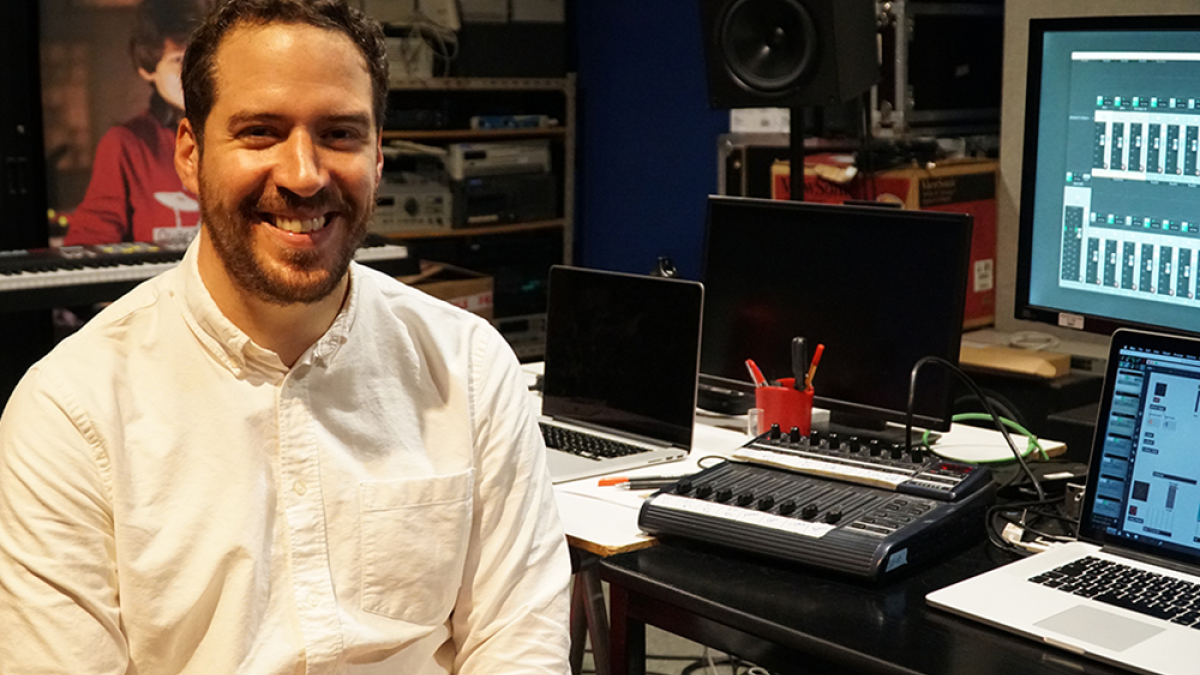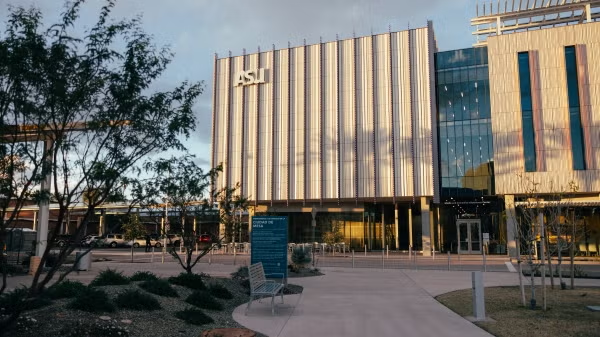Music professor's new compositions receive award, grant, world premieres

Gabriel José Bolaños
Gabriel José Bolaños, assistant professor of composition in Arizona State University's School of Music, Dance and Theatre, recently received a grant and an award, and two of his commissioned works premiered internationally.
Bolaños is a Nicaraguan-American composer of solo, chamber, orchestral and electroacoustic music.
He was recently awarded a $5,000 Arizona Commission on the Arts Research and Development Grant to create a computer program designed to aid in the composition and performance of polytemporal music. He will use the new software to compose, rehearse and premiere a new 30-minute piece for a percussion quartet.
The yearlong grant allows Bolaños to investigate different features of polytemporal music – music composed of different, simultaneous tempos or different rates of acceleration or deceleration that are all independent of each other.
“This type of music composition can be very complex, both in terms of the mathematics and the coordination between performers,” Bolaños said. “The software is intended to facilitate the composition and performance of this type of music — to give composers tools to hear these intricacies and to give performers tools to perform them during a live concert setting. I will also use the software to write a percussion quartet.”
Bolaños said the new piece will be performed by a newly formed quartet consisting of Michael Compitello, assistant professor of percussion, and Simone Mancuso, percussion faculty associate, in the School of Music, Dance and Theatre, as well as Douglas Nottingham, percussion faculty at Glendale Community College, and Brett Reed, percussion program director at Paradise Valley Community College. The anticipated November premiere will also showcase the software he created.
The software, video tutorials, recorded composition and score will be posted online with free access for others to use.
“Creating this type of music requires a lot of time to develop and explore because of the complexity of the research and programming aspects,” Bolaños said. “This grant is a perfect opportunity to take the necessary time for the research and then do the creative aspect with the incredible faculty performers we have at ASU.”
Bolaños said he has been indirectly exploring polytemporal music for several years in some of his compositions.
He recently collaborated with the ASU Symphony Orchestra and the ASU Wind Ensemble on video scores in which notation scrolled across the screen and the students would interpret it as it scrolled. One score used the same strategy Disney used in early animation, with the same music scrolling across the screen at different speeds. The scores were recorded and then mixed together. The complete work exists on an online interactive platform where audiences can also mix and match the pieces in real time.
A world premiere of one of his new music compositions, “Pixel Streams” for violin, video and electronics, was held in Lugo, Spain, at the Museo Interactivo da Historia de Lugo. The work was commissioned by Spanish violinist Roberto Alonso Trillo, Spanish ensemble Vertixe Sonora and Hong Kong Baptist University.
The yearlong collaborative project explored various new intersections between music and technology. Bolaños was one of four composers commissioned to write new pieces for solo violin with electronics.
“Pixel Streams” is a multimedia composition that combines images, video, live violin and electronics. It involves five different pixelated images or videos that become increasingly less pixelated as the piece progresses, so the audience gradually recognizes the underlying image of the video. There is also an analogous musical process of gradual depixelation: Each video has a corresponding musical “stream” that begins as very abstract and gradually becomes clearer.
Bolaños also created software that allows the performer to switch between the different streams at will and spend as much or as little time at each stage and on each one of the videos as desired.
“With technology, things are often predetermined and fixed, and the performer doesn't have a lot of freedom,” Bolaños said. “In this case, it's like improvisation in terms of the form of the piece, because the performer chooses how they navigate through this little ecosystem.”
He described the piece as an interesting balance between freedom and constraint, and also between the instrumental writing, the electronic part and the video all interacting to create a more immersive experience. He said the video was an orchestration of the sound and enhanced it.
Bolaños’ second commissioned world premiere was in Genoa, Italy, for his work “Nosotros hemos puesto los Muertos” for bass flute, violin, cello, bass and amplification.
The piece was commissioned by Eutopia Ensemble as part of a call for scores based on a theme of protest with music.
The piece includes fragments of a Nicaraguan folk tune used during the Sandinista revolution that became a symbol for freedom. Bolaños said he then distorted the fragment in various ways that represented the country’s anguish as the Sandinista rulers have become increasingly more violent and authoritarian.
He said the piece begins quietly, almost inaudibly, with delicate air sounds, and gradually builds to an almost unbearable noisy crescendo.
“The piece is meant to represent this sort of building of pressure that I felt personally, like the unraveling of the political situation in my home country of Nicaragua, where things are untenable and the government is (suppressing) free speech and protests and other things by force,” Bolaños said.
Bolaños received the 2022 Suzanne and Lee Ettelson Composer's Award for the work.
“I’m honored to receive the award for my work ‘Nosotros hemos puesto los muertos,’” Bolaños said. “This work is dedicated of all of the victims who have suffered at the hands of Nicaraguan dictator Daniel Ortega and his wife and vice president, Rosario Murillo, including the over 300 Nicaraguans who were murdered by Ortega and Murillo following the 2018 protests, and the dozens of political prisoners who have been imprisoned for standing up to his regime.”
The work will be performed by Ninth Planet in their 2022–23 season.
More Arts, humanities and education

Award-winning playwright shares her scriptwriting process with ASU students
Actions speak louder than words. That’s why award-winning playwright Y York is workshopping her latest play, "Becoming…

Exceeding great expectations in downtown Mesa
Anyone visiting downtown Mesa over the past couple of years has a lot to rave about: The bevy of restaurants, unique local shops…

Upcoming exhibition brings experimental art and more to the West Valley campus
Ask Tra Bouscaren how he got into art and his answer is simple.“Art saved my life when I was 19,” he says. “I was in a…

